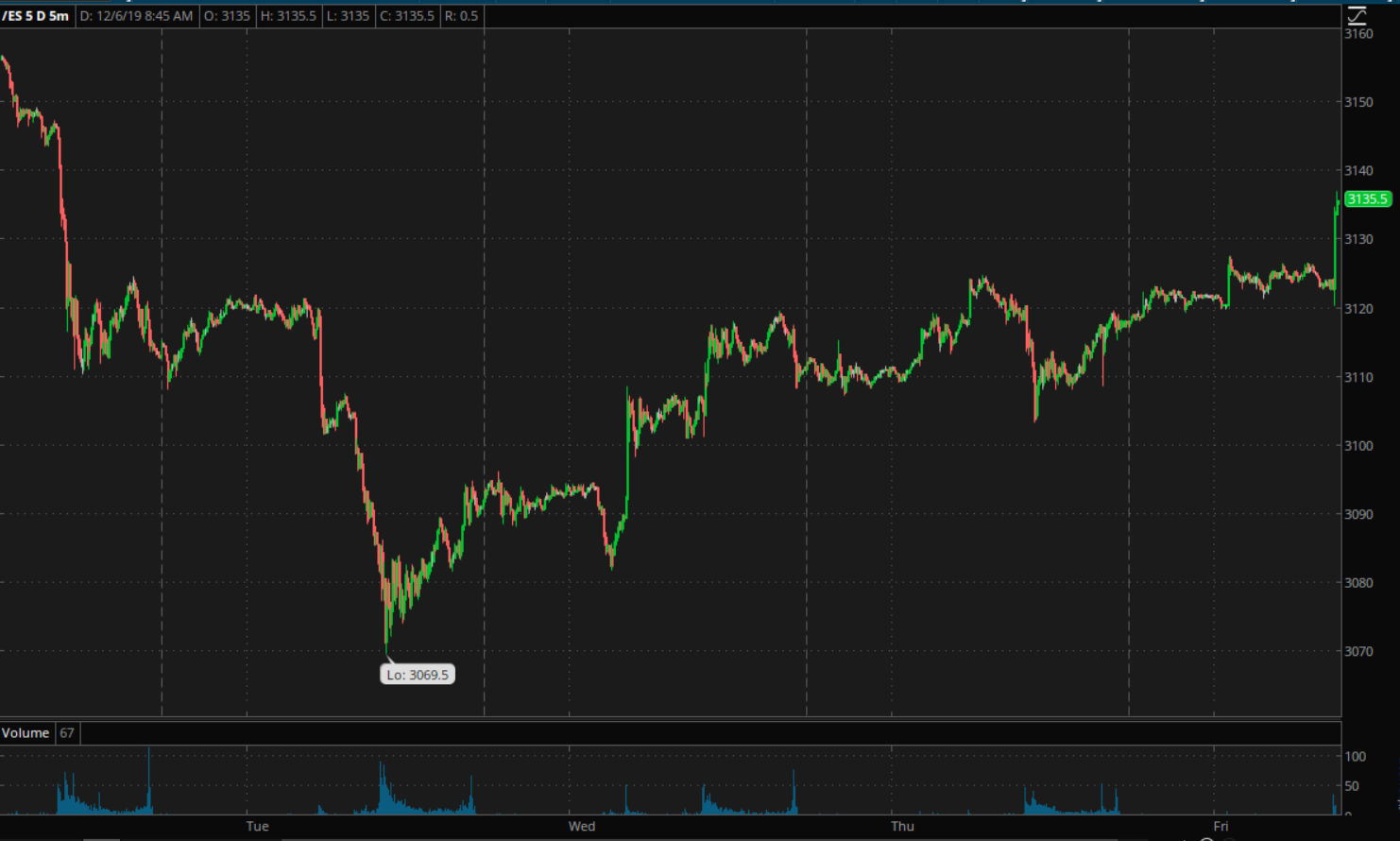The November Jobs Report which was released this morning was full of good news for the U.S. economy. 266,000 jobs were added last month, way above the 187,000 expected by economists, and the numbers for both September and October were revised upwards. Even hourly wages beat estimates, increasing by 3.1% rather than the 3.0% forecast and the headline unemployment rate fell again, to 3.5%. That is all great news, but the best news for stock investors wasn’t in the numbers themselves, it was in the market’s reaction to the release.

AS you might expect, futures for all the major indices jumped as the report was released, but there was something missing, something that we have become accustomed to over the last year or so when good economic news comes. There was no rapid pullback. In fact, as I write, twenty minutes after the numbers, the Dow, Nasdaq and S&P 500 are all edging even higher.
In the past, every bit of good news came with a question: What would be the effect on interest rates? Good news has been seen as bad, and bad as good for some time. A strong economy, it was assumed, meant higher interest rates and that possibility would temper any gains.
That reaction rested on the assumption that the main driver of high equity prices was low interest rates. Money seeks a return, and low rates on bonds makes the risk inherent in stocks seem like one worth taking when you can only realize less than two percent on bonds. This month is different.
This morning’s sustained jump in stocks, and the concurrent rise in bond yields, suggest that traders and investors are buying for simpler reasons. The economy is strong, and that is good enough reason to own U.S. equities.
That attitude is all the more remarkable because there are still potential problems. The trade war drags on and, if anything, a resolution to that dispute looks further away now than it has for some time. Larry Kudlow even said this morning that President Trump was quite prepared to walk away if certain conditions weren’t met. The problem is that meeting those conditions would involve a de facto admission from the Chinese of previous wrongdoing and that would be a significant loss of face.
Still, what is becoming increasingly clear is that the U.S. can continue to go from strength to strength, even with the overhang of tariffs. There is no knowing if things would be even better without them, but an argument could be made that the current situation is providing just enough drag to avoid overheating. That enables the Fed to keep rates relatively steady and results in growth without inflationary pressure.
If you dig deep into the report, there are still reasons to be concerned. Wage rises are still concentrated at the top, as evidenced by the fact that non-supervisory wages have remained pretty flat while the overall average has increased. That and continued weakness in the manufacturing sector could be harbingers of trouble to come, but for now the message is clear: The economy is humming along, and stocks are reacting accordingly without worries about the Fed’s reaction getting in the way.
The views and opinions expressed herein are the views and opinions of the author and do not necessarily reflect those of Nasdaq, Inc.

